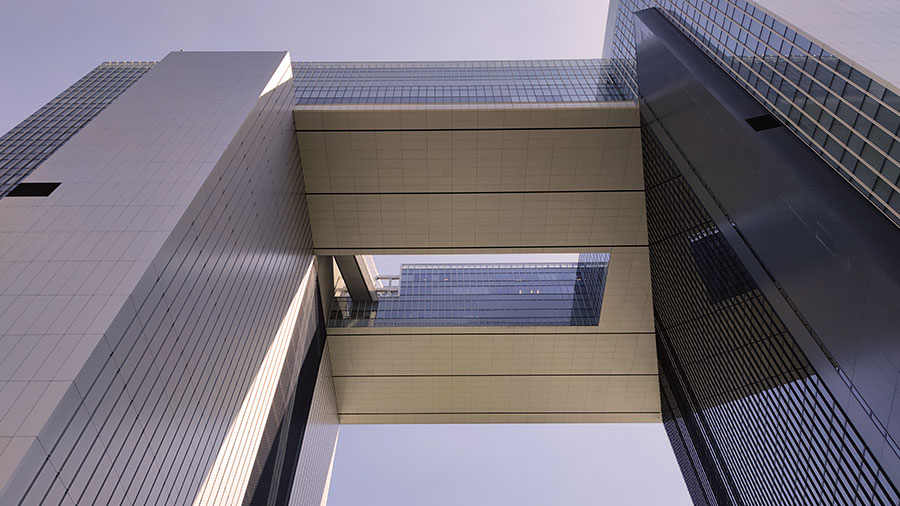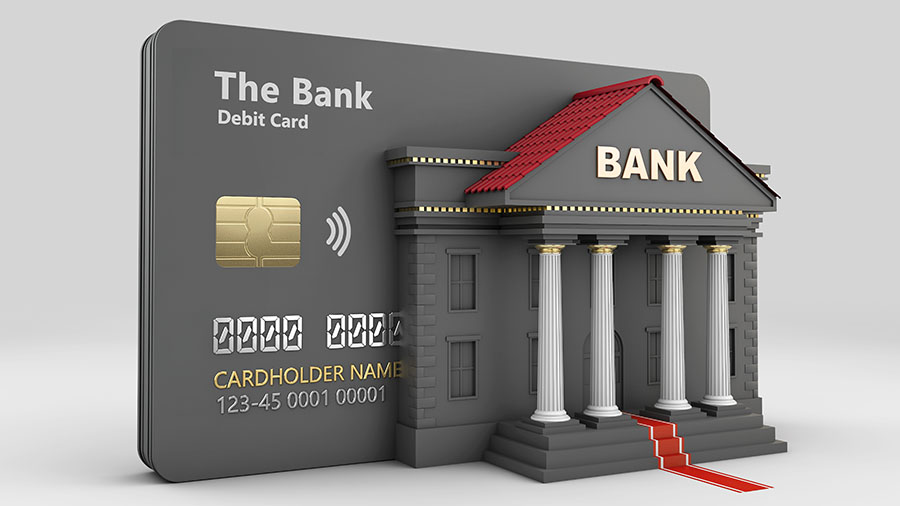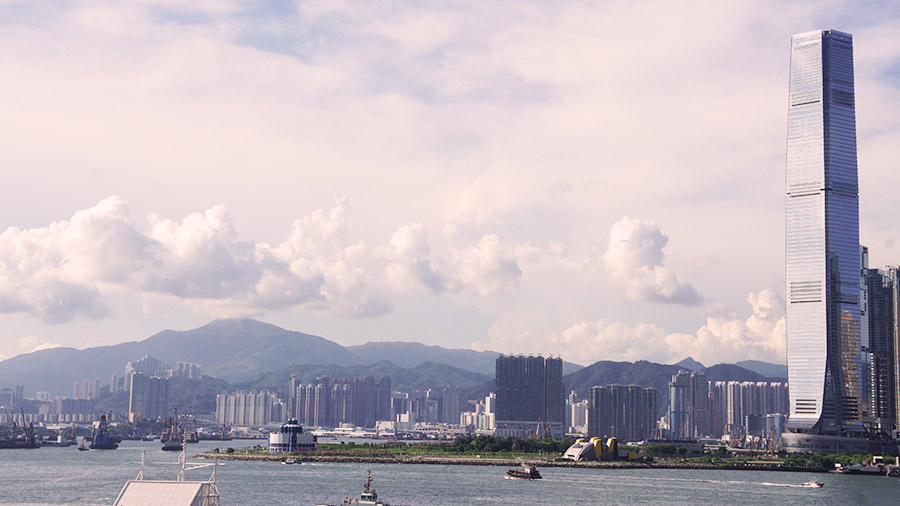Intellectual property protection importance
Protecting intellectual property rights is essential for nurturing creativity. Hong Kong stands as a hub of creativity. Its global recognition in film production, television, sound recordings, publications, fashion, jewelry design, and graphic design highlights its prowess in these fields, drawing a substantial international audience.
As an integral part of the global trading landscape, it becomes imperative for Hong Kong to extend robust intellectual property rights protection to investors. By doing so, Hong Kong can ensure a level playing field that is equitable and conducive to conducting business freely.
Basic Law and intellectual property rights
The Basic Law, which serves as the mini-constitution of the Hong Kong Special Administrative Region (SAR), explicitly outlines in Articles 139 and 140 the SAR's responsibility to independently formulate effective policies and legal safeguards for intellectual property.
Hong Kong recognizes several different classes of IP, including:
- Trademarks;
- Patents;
- Designs;
- Copyright;
- Trade secrets;
- Plant variations;
- Domain names; and
- Layout designs of integrated circuits.
Below, we summarize the trademark, patent, design, and copyright registration procedures.
Registering a trademark
For the benefits of a registered trademark, an application for registration must be made to the Trademarks Registry, Intellectual Property Department (IPD).
If you wish to register a trademark in Hong Kong, your first step is to check whether the trademark is already registered. This verification can be done online through the Trademark Online Search System. The Trade Marks Registry also offers Search and Preliminary Advice services, accessible by completing Forms T1 and paying the applicable fee.
Once you confirm the trademark is available, you can proceed with the application process.
Application process
This process can be done online via the IPD Electronic Filing Services or submitted physically to the Trade Marks Registry by completing Form T2, which should include a graphical representation of the trademark.
The Trade Mark Registry will carefully review it to ensure it aligns with the criteria specified in the Trade Marks Ordinance (Cap. 559) and the Trade Mark Rules (Cap. 559A). These criteria include:
- The trademark must possess distinctiveness.
- It cannot serve as a direct description of the goods or services the applicant is providing or intends to provide.
- The trademark should not consist of industry-specific or business-related terminology.
- It must not have been previously registered or applied for by another trader.
It's important to note that trademark registration exclusively covers the Hong Kong Special Administrative Region (SAR) jurisdiction. Registering a trademark in Hong Kong does not confer any rights or protections in the Chinese Mainland, and vice versa.
Registration timeline
Assuming your application is complete and accurate, the trademark registration process typically takes six months. Once approved, it will be published in the Hong Kong Intellectual Property Journal for public notice.
However, if your registration application is rejected by the Intellectual Property Department (IPD), they will promptly notify you in writing. You will then have a six-month window to rectify any issues with your application, with the possibility of a three-month extension if needed.
Registering a patent
Patents protect inventors by giving them the legal right to prevent others from manufacturing, using, selling, or importing their patented invention. Patent owners can bring civil proceedings against infringement of their patent.
Patent protection is limited to the specific jurisdiction where it’s granted. Applicants must submit a patent application under the Patents Ordinance (Chapter 154) and the Patents (General) Rules (Chapter 514C) to protect their inventions in Hong Kong.
Therefore, some considerations come into play when you apply for a patent:
- Basic patent law and principles for a better understanding of patent definitions and whether your inventions are available for patent registration;
- Prior patent research to ensure that your inventions are new and meet the requirements;
- Thoroughly assess the SWOT of your patent application procedures and IP protection strategy;
- Patent specification containing patent’s description, illustration, and claims statements.
Hong Kong has three types of patents that fall into two categories:
- Standard (O and R); and,
- Short-term.
|
|
Standard patent (O) |
Standard patent (R) |
Short-term patent |
|
Protection target |
Inventions with longer exploitation/commercialization terms |
Simple inventions with shorter exploitation/commercialization terms |
|
|
Maximum protection term (subject to renewal fee payment) |
20 years |
8 years |
|
|
General patentability requirement |
New, inventive, and industrially applicable |
||
|
Claim limitation per patent application |
Unlimited |
2 independent claims max. |
|
|
Pre-application requirement |
N/A |
Filing a patent application for the same invention with a patent office outside of the Hong Kong Special Administrative Region (SAR)*. |
N/A |
|
Support documents formality examination |
Mandatory for patent grant |
||
|
Thoroughly examining patent eligibility for applied inventions |
Mandatory for patent grant |
|
|
|
* The China National Intellectual Property Administration, the European Patent Office (in respect of a patent designating the United Kingdom), or the United Kingdom Intellectual Property Office. |
|||
Patent applications in the Hong Kong Special Administrative Region
|
Application process |
||
|
Standard (O) |
Standard (R) |
Short-term |
|
1st Stage
2nd Stage
|
|
Important deadlines
Below are office administrations’ key deadlines to note:
|
Action items |
Deadlines |
Extendible? |
Time extension request |
Section Nos. of PGR |
|
Respond to a deficiency notice regarding a filing date requirement |
Within 2 months after the notice date |
No |
- |
31V(2), Part 1 of Schedule 4 |
|
Respond to a formal requirements deficiency notice |
Within 2 months after the notice date |
Yes (2 months max.) |
Before the initial deadline limit expires |
31Y(1), 100AAB, Part 4 of Schedule 4 |
|
Respond to an examination notice |
Within 4 months after the notice date |
Yes (2 months max.) |
Within 2 months after the initial deadline limit expires |
31ZE(1), 100AAB, Part 5 of Schedule 4 |
|
Respond to a further examination notice |
Within 4 months after the notice date |
Yes (2 months max.) |
Within 2 months after the initial deadline limit expires |
31ZG(1), 100AAB, Part 5 of Schedule 4 |
|
Request a review for a provisional refusal notice. |
Within 2 months after the notice date |
Yes (2 months max.) |
Within 2 months after the initial deadline limit expires |
31ZI(1), 100AAB, Part 5 of Schedule 4 |
|
Respond to a review opinion |
Within 2 months after the notice date |
Yes (2 months max.) |
Within 2 months after the initial deadline limit expires |
31ZK(1), 100AAB, Part 5 of Schedule 4 |
|
Request a hearing in response to a review opinion if needed. |
Within 2 months after the notice date |
Yes (2 months max.) |
Before the initial deadline limit expires |
31ZK(2), 82(2)(a), 100AAB, Part 4 of Schedule 4 |
|
Respond to a further review opinion |
Within 2 months after the notice date |
Yes (2 months max.) |
Within 2 months after the initial deadline limit expires |
31ZM(1), 100AAB, Part 5 of Schedule 4 |
|
Request for hearing in response to a further review opinion (if applicable) |
Within 2 months after the notice date |
Yes (2 months max.) |
Before the initial deadline limit |
31ZM(2), 82(2)(b), 100AAB, Part 4 of Schedule 4 |
Registering a design
According to the Registered Designs Ordinance (Cap.522) and the Registered Designs Rules (Cap. 522A), registering a design is essential to obtain exclusive rights over the design within Hong Kong. Protection in other regions or with international agencies does not automatically extend to Hong Kong. Only the design’s rightful owner, whether through commission, employment contract, or assignment, can apply for registration. This legal protection empowers creators to defend their innovative visual creations and rights.
A registered design is a legal safeguard for the unique visual characteristics of a product, such as its shape, pattern, or ornamentation, acquired through industrial processes. It exclusively focuses on the product’s appearance, irrespective of its functionality. This protection grants the owner the authority to prohibit others from manufacturing, importing, selling, or using products with the same design, and it can be renewed for up to 25 years in five-year increments.
For a design to be eligible for registration, it must be entirely novel at the time of application and should not have been previously registered or publicly disclosed. The registration process primarily involves a formal examination with a limited novelty or aesthetic appeal assessment. Excluded from registration are designs that do not significantly impact an article's appearance, those conflicting with public order or morality, computer programs, and designs solely driven by functional features.
Application process
In summary, representations and a statement of novelty are crucial for clearly defining and protecting the features of a new design, ensuring transparency for the public.
For textile designs, a sample can be submitted under specific conditions. Design owners can claim convention priority if they apply within six months of their first application in a Paris Convention country or WTO member, provided the design is new at the priority date.
Confidential disclosures, such as those in confidence or during official international exhibitions, won't compromise the novelty of a design. Furthermore, designs displayed at or published after such exhibitions can maintain their originality if an application is submitted within six months of the exhibition's opening.
For updates on official international exhibitions, the Bureau International des Expositions in France provides relevant information.
Mentioned below are the application processes applicants must follow:
- Application filing date examination and determination;
- Formal requirements review;
- Registration and publication.
To file for a design registration, submit the prescribed form, provide a representation and statement of novelty, and pay the registration fee. If the application is in order, the Designs Registry of IPD will publish the registration in the Hong Kong Intellectual Property Journal.
One application can include multiple designs if they relate to the same product group or category in the Locarno Classifications. A reduced fee is required for each additional design.
A “set of articles” refers to two or more items with a similar design and intended to be used or sold together.
It is advisable to seek expert guidance in this field to submit your application.
Copyright
Copyright is a crucial aspect of our daily lives that safeguards the rights of creators and their original works. Copyright applies to the following:
- Literary, dramatic, musical, or artistic work;
- Sound recordings, films, broadcasts, or cable programs; and,
- The typographical arrangement of published editions.
What sets copyright apart from other intellectual properties is that it automatically exists when a work is created without formal registration.
With the copyright, the owner has the exclusive right to:
- Copy the work;
- Issue or make available copies of it to the public;
- Rent out copies of it to the public;
- Perform the work;
- Broadcast the work; and,
- Adapt the work.
Copyright enforcement also includes criminal sanctions, with the Customs and Excise Department playing a crucial role. They have the authority to investigate and confiscate suspected infringing copies. Those who commit copyright piracy may face maximum imprisonment and substantial fines of HK$500,000 (US$64,000).
Importing or exporting pirated articles, involvement in copyright piracy outside Hong Kong for importation into the region, and manufacturing equipment for copyright piracy are all considered criminal offenses.
The duration of copyright protection generally extends for 50 years after the creator's death. However, variations exist based on the type of work.
Registered licensing bodies
Copyright licensing bodies are organizations that copyright owners authorize to grant, on their behalf, licenses to users of copyright works.
The Copyright Ordinance (Cap.528) provides for a voluntary registration scheme for copyright licensing bodies. The scheme aims to enhance the transparency of these bodies by requiring registered licensing bodies to make available to the public essential information such as scales of royalty charges for different uses.
The following are six registered licensing bodies in Hong Kong:
- Composers and Authors Society of Hong Kong Limited (CASH);
- Hong Kong Recording Industry Alliance Limited;
- Motion Picture Licensing Company (Hong Kong) Limited;
- Phonographic Performance (South East Asia) Limited;
- The Hong Kong Copyright Licensing Association Limited;
- The Hong Kong Reprographic Rights Licensing Society Limited.
If you wish to apply for the Copyright Licensing Bodies Registry for new registration as a registered licensing body or renewal registration, you must fill out the following specified forms:
|
Form no. |
Descriptions |
Fee |
|
C1 |
Application for Registration by an Unincorporated Body |
HK$2,130 (US$270) |
|
C2 |
Statement of Particulars in Support of an Application for Registration by an Unincorporated Body |
N/A |
|
C3 |
Application for Registration by a Body Corporate |
HK$2,130 (US$270) |
|
C4 |
Statement of Particulars in Support of an Application for Registration by a Body Corporate |
N/A |
|
C6 |
Application for Renewal of Registration by an Unincorporated Body |
HK$1,500 (US$191) |
|
C7 |
Statement of Particulars in Support of an Application for Renewal of Registration by an Unincorporated Body |
N/A |
|
C8 |
Application for Renewal of Registration by a Body Corporate |
HK$1,500 (US$191) |
|
C9 |
Statement of Particulars in Support of an Application for Renewal of Registration by a Body Corporate |
N/A |







